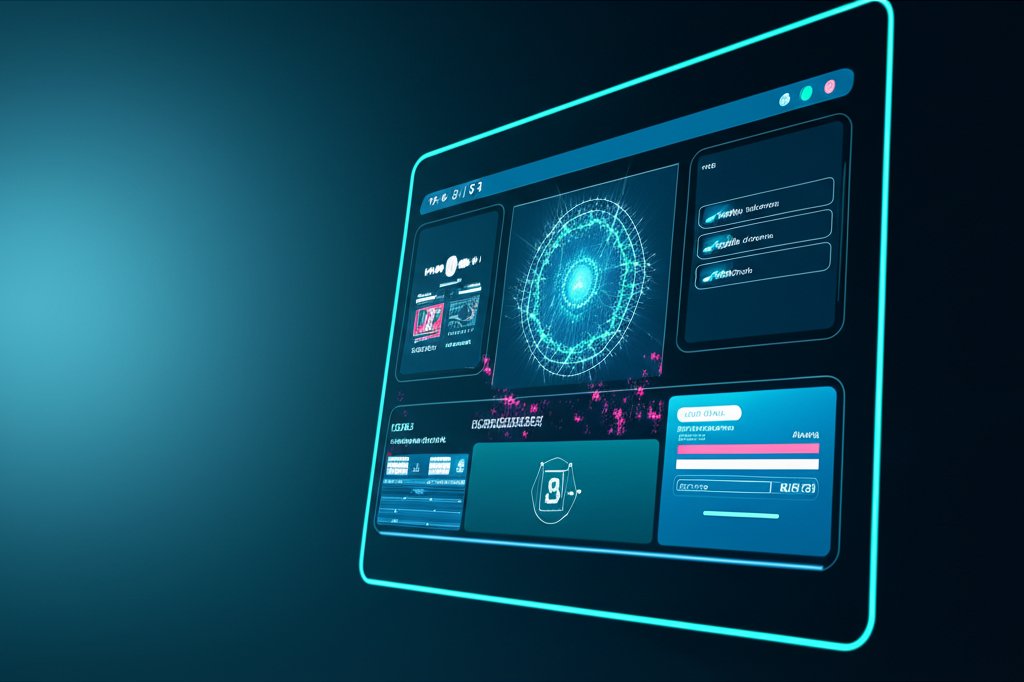In our increasingly connected world, digital security isn’t just a concern for tech giants; it’s a fundamental requirement for everyone. From individuals safeguarding personal data to small businesses protecting their livelihoods, a strong defense is non-negotiable. One of the cornerstone tools in this defense arsenal is the vulnerability assessment (VA). Think of it as a crucial digital health checkup for your systems, meticulously designed to spot weaknesses before cybercriminals can exploit them.
We all understand the importance of VAs, yet it’s a perplexing paradox that so many of them fall short of expectations. You invest time and resources, hoping to bolster your defenses, only to find yourself still vulnerable. We’ve seen this scenario play out time and again, leaving businesses exposed and individuals at risk.
But what exactly are these hidden pitfalls that cause vulnerability assessments to fail? This article will dive into the common, often overlooked reasons why these crucial security exercises don’t deliver. More importantly, we’ll equip you, as an everyday internet user or small business owner, with the knowledge and practical steps to ensure your digital security checks truly protect you, empowering you to take control of your digital safety.
Table of Contents
- What Exactly Is a Vulnerability Assessment (and Why You Need One)?
- Why Do Vulnerability Assessments Often Miss Critical Assets or Systems?
- Can I Rely Solely on Automated Scans for My Vulnerability Assessment?
- How Often Should I Conduct Vulnerability Assessments, and Why is Regularity Important?
- How Can Misconfiguration or Technical Glitches Undermine a Vulnerability Assessment?
- Why Should I Care About “Low-Risk” Vulnerabilities Found in an Assessment?
- What Makes a Vulnerability Assessment Report Actionable and Useful for Non-Technical Users?
- What Are the Real-World Consequences of a Failed Vulnerability Assessment for Small Businesses?
- What Are the Most Important Practical Steps to Ensure My Vulnerability Assessment Succeeds?
- When Should I Consider Involving Human Expertise in My Vulnerability Assessments?
Basics
What Exactly Is a Vulnerability Assessment (and Why You Need One)?
A vulnerability assessment is a systematic process designed to identify security weaknesses in your computer systems, networks, and applications. It’s akin to a comprehensive medical check-up for your digital infrastructure, aiming to find potential flaws before malicious actors can exploit them. This proactive approach is fundamental to managing your digital risks effectively.
Unlike a full-blown surgical intervention, which might be a better analogy for penetration testing (where ethical hackers actively try to breach your defenses), a VA is primarily focused on discovery and detailed reporting. Small businesses, often operating with limited resources and less robust security infrastructure, are unfortunately prime targets for cyberattacks. A successful VA helps you prioritize and fix the most pressing issues, thereby safeguarding your financial stability, preserving your reputation, and maintaining customer trust.
What You Can Do:
Recognize the Necessity: Understand that a VA isn’t optional; it’s a vital component of modern digital hygiene. If you haven’t considered one, now is the time to start. For individuals, this means ensuring your personal devices and home network are regularly updated and scanned for vulnerabilities using reputable security software.
Why Do Vulnerability Assessments Often Miss Critical Assets or Systems?
One of the most frequent reasons vulnerability assessments fail is an incomplete scope. This means the assessment simply doesn’t look at everything it should, leaving significant portions of your digital footprint unprotected. These “asset blind spots” prevent a full and accurate picture of your organization’s digital health.
Imagine trying to secure your home by checking all the locks, but forgetting to inspect the back door, the basement windows, or that old shed where you store valuables. Similarly, if your VA overlooks critical systems, network devices, cloud services, or even “Shadow IT” (unmanaged devices or software used by employees), you’re inadvertently leaving open doors for cybercriminals. Forgetting about your data stored in the cloud or other third-party services can be a critical oversight, as attackers actively target these expanding perimeters, especially where traditional assessments might struggle.
Real-World Example: A small architectural firm, let’s call them “DesignSafe,” conducted a VA focusing only on their on-premise servers and employee workstations. They completely overlooked a third-party cloud service they used for client collaboration and large file sharing. An attacker discovered a misconfiguration in this cloud service, gaining access to sensitive client blueprints and project details, leading to a significant data breach. DesignSafe’s VA failed to protect them because it didn’t include a crucial part of their digital ecosystem.
What You Can Do:
Inventory Everything: Create a comprehensive list of all your digital assets. This includes all computers, servers, network devices, smartphones, cloud services (like Microsoft 365, Google Workspace, Dropbox, CRM platforms), websites, and any specialized software you use. Don’t forget devices used by remote employees or any “Shadow IT” that may have crept in. For small businesses, involve all departments to ensure nothing is missed. When engaging a VA provider, demand a clear definition of the scope and ensure it covers every item on your inventory list.
Can I Rely Solely on Automated Scans for My Vulnerability Assessment?
While automated scanning tools are incredibly valuable and form the backbone of many vulnerability assessments, relying on them exclusively creates an illusion of complete security. These tools are excellent at quickly identifying known vulnerabilities (like outdated software versions) and common misconfigurations across large networks.
However, automated scanners have inherent limitations. They often miss subtle business logic flaws (e.g., a specific sequence of actions on a website that could bypass security), complex chained vulnerabilities (where multiple small weaknesses combine to create a significant problem), or zero-day threats (new, unknown exploits). Furthermore, they typically can’t understand the full context of your business operations or the nuances of custom-built applications. Human attackers, conversely, use creativity, lateral thinking, and a deep understanding of systems that machines simply cannot replicate. A purely automated approach might, therefore, give you a false sense of security against sophisticated, targeted threats.
Real-World Example: “Bookish Bites,” a popular online bookstore for indie authors, relied exclusively on automated scans for their website. While the scans caught common issues, they missed a specific flaw in the site’s custom review submission form. An attacker exploited this logic flaw, not by injecting malicious code, but by submitting reviews in a way that bypassed moderation, leading to the platform being flooded with spam and damaging its reputation. An automated scanner couldn’t understand the business logic of “what makes a valid review submission” and thus missed the exploit.
What You Can Do:
Embrace a Hybrid Approach: Understand that automated tools are a starting point, not the finish line. For small businesses, this means using reputable automated scanners consistently but also considering targeted manual reviews for critical assets or custom applications. If you have a website that handles customer data or payments, ask a professional to perform a manual review of its logic. For individuals, ensure your antivirus and firewall software have advanced behavioral analysis capabilities, not just signature-based detection.
Intermediate
How Often Should I Conduct Vulnerability Assessments, and Why is Regularity Important?
You should conduct vulnerability assessments regularly, ideally quarterly or even monthly for highly dynamic environments, because cybersecurity is an ongoing process, not a one-time event. New vulnerabilities emerge constantly, and a single scan quickly becomes outdated, leaving you exposed.
Think of it like getting your car’s oil changed; it’s not a once-and-done task. Your digital landscape is constantly shifting: new software updates are released, new employees join, new devices connect to your network, and new cyber threats appear daily. Regular assessments ensure you catch these new weaknesses as they arise. Furthermore, it’s crucial to retest after making any significant changes—such as deploying new software, updating critical systems, or applying security fixes. Without retesting, you can’t truly verify if the vulnerability has been resolved or if the fix itself introduced new issues, potentially making your initial efforts pointless and creating a false sense of security.
Real-World Example: “Local Hardware Co.,” a small chain of hardware stores, conducted an annual VA. Midway through the year, a critical new vulnerability was discovered in a popular e-commerce platform they used. Because they weren’t scanning regularly, their system remained unpatched for months, becoming an easy target for a ransomware attack that encrypted their sales data and brought their online operations to a standstill, costing them significant revenue and customer trust.
What You Can Do:
Schedule and Stick to It: Establish a clear schedule for your VAs. Quarterly assessments are a solid baseline for most small businesses, but monthly might be necessary if your digital environment changes rapidly. For individuals, ensure your operating system, web browser, and all applications are set to update automatically. Always re-scan your systems immediately after major updates or significant configuration changes to verify the fixes and identify any new issues.
How Can Misconfiguration or Technical Glitches Undermine a Vulnerability Assessment?
Misconfiguration and technical glitches can severely undermine a vulnerability assessment by leading to incomplete, inaccurate, or entirely missed findings. The effectiveness of any scanning tool, no matter how sophisticated, is only as good as its setup and the environment it operates within.
Common issues include incorrect scan settings (e.g., targeting the wrong IP range, using outdated vulnerability definitions, or scanning only external IPs when internal ones are also critical), network connectivity problems (firewalls or network policies inadvertently blocking the scanner’s access to certain segments), or inadequate permissions (the scanner lacking the necessary credentials to thoroughly inspect systems from an authenticated perspective). If your scanner can’t reach all your assets, or can’t dig deep enough due to insufficient access, it’s essentially scanning with one eye closed. This provides a distorted and unreliable picture of your actual security posture, leaving critical vulnerabilities undetected.
Real-World Example: A small accounting firm hired a security vendor for a VA. During the setup, a firewall rule on their network inadvertently blocked the scanner from accessing their internal file server. The VA report came back clean, giving the firm a false sense of security. Months later, a simple brute-force attack on the unmonitored file server succeeded because its weak default password had never been detected by the “failed” VA. The misconfiguration of the scanner, not the scanner itself, was the pitfall.
What You Can Do:
Verify the Setup: When you engage a VA provider, ask specific questions about how they ensure the scanner has full access to all target systems. Confirm that firewalls or network access controls won’t impede the scan. If your VA uses authenticated scans (which are highly recommended), ensure the scanner has appropriate, least-privilege credentials. For individuals, make sure your security software has full system access and isn’t being blocked by other programs or firewall settings.
Why Should I Care About “Low-Risk” Vulnerabilities Found in an Assessment?
Ignoring “low-risk” findings can be a critical mistake because seemingly minor vulnerabilities can often be chained together by attackers to create a major exploit. Attackers are always looking for the path of least resistance, and that path rarely involves a single, glaring, high-risk flaw. More often, it’s a series of smaller, interconnected weaknesses that provide enough leverage to bypass defenses.
Think of it like a series of small cracks in a building’s foundation. Individually, each crack might seem insignificant, but together, they can compromise the entire structure. Similarly, a combination of several low-severity issues—like an outdated server, a weak default password on an obscure internal service, and an unpatched application with a minor information disclosure flaw—can provide a clever attacker with enough pieces to gain unauthorized access. Prioritizing only critical issues leaves a landscape of smaller, interconnected weaknesses ripe for exploitation, making your overall security posture weaker than you might believe. These “low-risk” findings are often the stepping stones for a more sophisticated attack.
Real-World Example: “GreenScape Landscaping” received a VA report with several “low-risk” items: an outdated WordPress plugin on their blog, an unencrypted connection to their printer, and a publicly accessible folder on their web server with a generic “index.html” page. Individually, these seemed minor. However, an attacker exploited the WordPress plugin to gain a small foothold, used the unencrypted printer connection to sniff out a network password, and then leveraged the publicly accessible folder to drop malware that eventually gave them control of GreenScape’s main office network, demanding a ransom.
What You Can Do:
Adopt a Holistic View: Don’t dismiss “low-risk” findings. Instead, understand their context. Work with your security provider to see how these seemingly minor issues could be combined by an attacker. Prioritize fixing them even if they don’t seem immediately critical, especially if they are easy to remediate. For individuals, this means not just fixing critical software flaws but also changing default passwords on IoT devices and ensuring all home network devices are updated.
Advanced
What Makes a Vulnerability Assessment Report Actionable and Useful for Non-Technical Users?
An actionable and useful vulnerability assessment report for non-technical users prioritizes clarity, context, and practical remediation steps over raw technical detail. It must bridge the gap between complex cybersecurity jargon and understandable business risks, enabling you to make informed decisions without needing a cybersecurity degree.
Effective reports should always start with a concise executive summary in plain language, explaining what was found, the overall security posture, and the potential business impact. This summary should avoid overwhelming technical terms. They need to clearly prioritize findings based on actual business risk (e.g., “This vulnerability could lead to a data breach affecting customer payment information”), not just technical severity (e.g., “CVE-2023-XXXX Critical”). Crucially, the report must provide concrete, step-by-step remediation instructions, explaining what needs to be fixed, why it matters to your business, and how to fix it, or at least guiding you on who to consult. Without this clarity, a report is merely a list of problems you can’t solve, rendering the entire assessment pointless and leaving you feeling overwhelmed and helpless.
Real-World Example: “Artisan Crafts Co.,” a small online seller of handmade goods, received a VA report that was a dense, 60-page PDF filled with technical terms, CVE numbers, and network diagrams. The business owner, who was not technical, found it incomprehensible. Overwhelmed, they put it aside, and several critical vulnerabilities remained unaddressed for months. Had the report included a one-page executive summary in plain English, prioritizing the top three risks with clear action items, Artisan Crafts Co. could have taken immediate, effective steps.
What You Can Do:
Demand Clarity: Before engaging a VA provider, clarify your expectation for the report format. Insist on an executive summary written for a business audience, a clear prioritization of findings based on business impact, and specific, understandable remediation instructions. Ask for a follow-up call to walk through the report and answer any questions. Don’t accept a report that leaves you confused; it’s your right to understand the risks to your business.
What Are the Real-World Consequences of a Failed Vulnerability Assessment for Small Businesses?
The real-world consequences of a failed vulnerability assessment for small businesses are severe and can be devastating, ranging from significant financial losses to irreparable reputational damage. When VAs fail, the underlying vulnerabilities remain unaddressed, leaving your business exposed to a variety of cyber threats that are actively exploited daily.
This exposure dramatically increases your risk of data breaches, ransomware attacks, denial-of-service attacks, and other forms of cybercrime. A successful attack can lead to immense financial burdens, including operational downtime that halts your business, costly recovery efforts (hiring specialists, rebuilding systems), potential legal fees from affected parties, and hefty regulatory fines (like GDPR or PCI DSS penalties for mishandling data). Beyond the direct financial hit, a breach can erode customer trust, severely damage your brand’s reputation, and even lead to business closure. Protecting your business’s digital assets isn’t just a technical task; it’s a fundamental part of maintaining its viability, trustworthiness, and long-term success. The cost of a failed VA pales in comparison to the cost of a successful attack.
Real-World Example: Consider “Urban Roots Cafe,” a popular local coffee shop that launched an online ordering and loyalty program. They decided to skip regular VAs to save on perceived costs. A known vulnerability in their online ordering system was eventually exploited, leading to a ransomware attack that shut down their online sales for a week and compromised customer payment data. The recovery cost them thousands, they faced fines, and their once-loyal customer base dwindled due to the breach, costing them more than just money – it cost them their hard-earned reputation.
What You Can Do:
Prioritize Proactive Security: Understand that investing in effective VAs is a form of risk management. It’s significantly cheaper and less disruptive to find and fix vulnerabilities proactively than to react to a cyberattack. Factor security costs into your budget, recognizing them as an investment in business continuity and trust, not just an IT expense.
What Are the Most Important Practical Steps to Ensure My Vulnerability Assessment Succeeds?
To ensure your vulnerability assessment truly succeeds and fortifies your defenses, you must focus on preparation, a balanced approach, consistency, and clear communication. These practical steps can significantly enhance your security posture without requiring deep technical expertise, empowering you to effectively manage your digital risks.
Here’s how to take control:
- Get a Full Picture: Begin by creating a comprehensive inventory of all your digital assets—every device, piece of software, cloud service, and network component. Clearly define the assessment’s scope to ensure nothing critical is overlooked.
- Embrace a Hybrid Approach: Utilize reputable automated scanning tools consistently, as they provide efficiency. However, always consider supplementing this with insights from a cybersecurity professional for more in-depth, human-driven reviews, especially for critical systems or custom applications.
- Make it a Habit: Schedule regular assessments (quarterly is a good start, but adjust based on your environment’s dynamism). Crucially, always retest after implementing any fixes or making significant changes to verify effectiveness and catch new issues.
- Demand Clear, Actionable Reports: Insist that your VA provider delivers reports with an executive summary in plain language, clear prioritization of risks based on business impact, and practical, step-by-step remediation instructions.
- Foster a Security-Aware Culture: Educate yourself and your employees on common threats like phishing, the importance of strong, unique passwords, and the necessity of promptly installing security updates. Human error is often the weakest link, and awareness is your first line of defense.
When Should I Consider Involving Human Expertise in My Vulnerability Assessments?
You should strongly consider involving human expertise in your vulnerability assessments when you need to go beyond the capabilities of automated checks, understand complex business logic flaws, or require tailored, strategic advice specific to your environment. While automated tools are excellent for efficiency and finding known issues, human insight brings a layer of understanding, creativity, and contextual awareness that machines simply can’t replicate.
A seasoned cybersecurity professional can identify vulnerabilities that automated scanners typically miss, such as complex authentication bypasses, chained exploits that combine multiple minor flaws, or subtle vulnerabilities within your unique business processes or custom applications. They can also accurately interpret the context of findings, differentiate between false positives and real threats, and provide prioritized, actionable remediation plans that are truly tailored to your specific environment and risk appetite. Even for small businesses, a basic consultation for an initial assessment or for interpreting a complex report can provide invaluable strategic guidance and significantly strengthen your overall digital defenses. It’s an investment in understanding the true landscape of your risks.
Real-World Example: “Bespoke Blooms,” a flower delivery service known for its custom arrangements, developed a unique online ordering system. They used automated scans for years, finding generic issues. When they finally hired a human security consultant for a targeted review, the consultant quickly uncovered a sophisticated flaw in their custom order processing logic. This flaw could have allowed a malicious user to manipulate order prices without detection, a vulnerability an automated scanner, focused on generic patterns, would have never detected. This human insight prevented potential financial fraud and reputational damage.
What You Can Do:
Strategically Engage Experts: Consider bringing in a cybersecurity consultant when you have custom software, critical business applications, or sensitive data. Even a few hours of an expert’s time for a focused review or to interpret a complex report can be immensely valuable. Look for professionals who specialize in small business security or have experience with your specific industry or technology stack. Don’t wait until a breach to realize the value of human expertise.
Related Questions
- How can I choose the right vulnerability assessment tool for my small business?
- What’s the difference between a vulnerability assessment and penetration testing, and which one do I need?
- Are there free or low-cost resources for conducting basic vulnerability assessments?
Conclusion
Vulnerability assessments are undeniably vital for protecting your digital assets in today’s dynamic threat landscape. But as we’ve explored, their success is not a given; it hinges on actively avoiding common, often hidden, pitfalls. For everyday internet users and small businesses alike, understanding why these assessments can fail isn’t just theoretical knowledge—it’s empowering insight that allows you to take genuine control of your digital security posture.
Don’t let complacency or an incomplete approach leave you exposed. Cyber threats are persistent and ever-evolving, and your defenses must be too. By being thorough with your scope, embracing a blend of automated tools and critical human insight, maintaining regularity in your assessments, and demanding clear, actionable reports, you can transform your vulnerability assessments from potential failures into robust, reliable pillars of your digital defense. Take these crucial steps today to strengthen your digital defenses, proactively protecting your business and personal data from the ever-present threat of cyberattack. Your digital security is in your hands – empower yourself to secure it.









